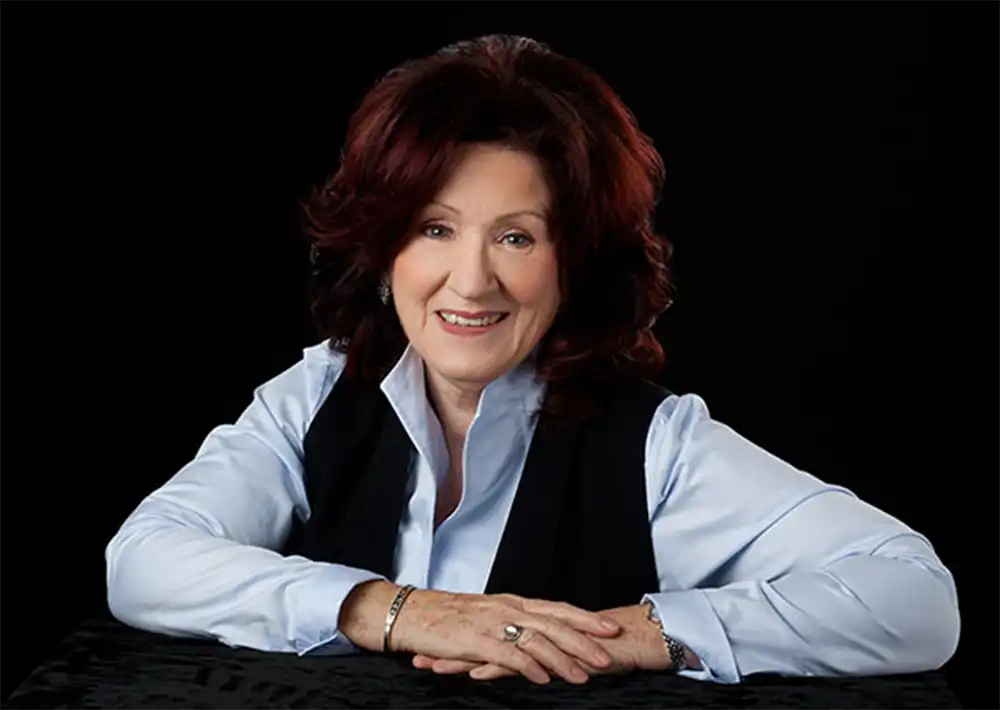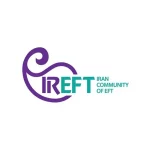Dr. Sue Johnson (1947-2024) was a well-known author, clinical psychologist, researcher, professor, broadcaster as well as a popular speaker and brilliant innovator in couple therapy and adult attachment research. She was the main developer of emotionally focused therapy (EFT) and proved its efficacy in more than 35 years of self-conducted and peer-reviewed clinical research.
She served as the founder and chairwoman of the International Center for Excellence in Emotionally Focused Therapy (ICEEFT) and was also an esteemed researcher in Alliant International University in San Diego, California, and a emeritus professor of clinical psychology in University of Ottawa, Canada.
Dr. Johnson received several awards for her work in developing EFT and her efforts in disseminating EFT through certificate programs and other contributions at an international level for the excellence of couple therapy, family therapy and adult attachment in general, including the Order of Canada (CM) and an honorary prize for a life of achievement in psychotherapy in 2022.
Her first book for the general public title Hold Me Tight: Seven Conversations for a Lifetime of Love (2008, New York: Little Brown) is a self-help book based on her pioneering studies (dealing with how to strengthen our relationships, how to change them for better and how to maintain them). More than one million people all around the world has purchased this bestselling title which has been translated into 30 languages and comes with a workbook that was published in 2022. There are also online workshops based on the book that can be found on HoldMeTightOnline.com. The material for these workshops has been translated into many different languages and has been tailor made for particular groups such as couples diagnosed with coronary issues, families with teenage and adult children as well as Christine families.
Dr. Johnson’s second book, Love Sense: The Revolutionary Science of Romantic Relationships (2013, New York: Little Brown) was also based on recent scientific findings and describes a new understanding of the rationale underlying the hows and whys of love. Believing that romantic love relies on attachment bonds, Dr. Johnson shows us how we can develop our “love sense” and enjoy our capacity for establishing lifelong relationships.
Her most famous titles in the professional field are Creating Connection: The Practice of Emotionally Focused Marital Therapy (3rd ed. 2020), Emotionally Focused Family Therapy: Restoring Connection and Promoting Resilience (2019), Emotionally Focused Couple Therapy with Trauma Survivors: Strengthening Attachment Bonds (2002, New York: Guilford Press) and Attachment Theory in Practice: Emotionally Focused Therapy (EFT) With Individuals, Couples, and Families (2019, New York: Guilford Press) which brings the promise of attachment science in healing and restoring our most precious relationships and helping us flourish our potentials in becoming flexible and strong individuals.
Attachment science provides us with the strongest model of change in psychotherapy, particularly when it comes to working with anxiety and depression. Among all the therapeutic modalities at hand, EFT reflects the essence of attachment to the fullest. EFT focuses on strong emotions as the main evolutionary-based determinants of human relationships and systematically shapes the interactive bonds between individuals.
Dr. Sue Johnson’s Awards
The Efficacy of EFT in Working with Couple Relations
The meta-analysis (Johnson et al, 1999) of the four most rigorous outcome studies conducted before the year 2000, showed a larger effect size (1.3) than any other couple intervention has achieved to date. Studies consistently show excellent follow-up results, and some studies show that significant progress continues even after therapy. EFT has a body of process research showing that change does indeed occur in the way that the theory suggests. This level of linkage between in-session process and rigorous outcome measurement is unusual in the field of psychotherapy. Subsequent meta-analyses confirm the efficacy of EFT.
EFT is the only model of couple intervention that draws upon a systematic empirically validated theory of adult relating as the basis for comprehending and alleviating relationship problems. The generalizability of EFT across various clients and couples facing co-morbidities such as depression and PTSD has been examined and results are consistently positive. Outcome and process research addressing key relationship factors, such as the forgiveness of injuries, has also been conducted with positive results. EFT studies are generally rigorous and published in the best peer reviewed journals.
Research shows that EFT is an effective therapy for highly distressed and escalated couples as well. In one study that consisted of 330 couples, 70% were symptom-free by the end of therapy and this did not change even 2 years after the end of therapy.
In another research aimed at determining the effect of Emotionally Focused Couple Therapy (EFCT) on sexual dissatisfaction that was conducted in the city of Shiraz with a pre-test, post-test and control group that was conducted in the public centers as well as private sectors there, 16 couples (32 individuals) who ranked below average on sexual satisfaction index were chosen randomly and yet randomly assigned to two experiment and control groups. The results showed significant difference with regards to changes occurring in dependent variant. In other words, EFCT has had an enormous effect on sexual satisfaction of couples. This was more significant in female subjects.
There is also another study researching the effect of EFT on emotional expression styles of married women who made an appointment in Zone 2 of Tehran’s public clinics. The subjects, 30 in number, were all women who made an appointment in the aforementioned clinic and were chosen by nonprobability sampling method from amongst those who reported high occupational burnout and were later randomly assigned to control and test groups respectively. They were asked to fill in the Emotional Expression Questionnaire (EEQ) as well as the Ambivalence over Emotional Expression Questionnaire (AEQ) originally developed by King and Emmons (1990). After every 90 minutes session, the test group was asked to fill the questionnaires again. The results show that EFT has a significant effect on enhancing emotional expression, self-control, aggression control, and in decreasing ambivalence towards emotional expression, emotional inhibition and rumination. Given the results at hand, one might conclude that EFT can affect the emotional expression styles in married women.
In another research, using EFCT in working with couples with one PTSD-diagnosed partner, the results showed significant increase in life satisfaction as well as significant decrease in depression and psychological distress, particularly in veteran subjects. Those veterans afflicted by the atrocities of war also reported a decrease in their PTSD-related symptoms. Results provide rudimentary evidence on the effectiveness of EFT in helping to enhance relationship satisfaction and psychological wellbeing for PTSD-diagnosed veterans as well as their spouses post therapy. These findings strongly suggest that EFCT interventions not only enhance marital satisfaction, but also showed consistent improvement in later follow ups. EFCT proves to be an effective treatment both in facilitating change during the course of therapy as well as maintaining the results afterwards.
In yet another research on couple intimacy, EFCT proved to be effective in enhancing emotional, psychological, sexual and somatic intimacy between the couple while there was no significant difference in social, recreational and spiritual intimacy between the two study groups.
How Dr. Johnson and Dr. Greenberg’s models are different:
Content:
Same terms, different meanings
Dr. Greenberg’s model of emotionally focused therapy
Dr. Johnson’s model of emotionally focused therapy
Historical differences in the two models of EFT
Differing goals and emphasis between Dr. Johnson and Dr. Greenberg
Common elements between Dr. Johnson’s and Dr. Greenberg’s EFT models
Maladaptive emotions or negative interaction patterns?
Differing processes for couple therapy
If you are newcomer to the world of emotionally focused therapy, one of the most fundamental questions you might have come up with is the difference between Greenberg and Johnson’s models of emotionally focused therapy.
To understand Dr. Johnson’s model better, we need to look into its differences with Dr. Greenberg’s model more deeply.
IREFT has been actively disseminating Dr. Sue Johnson’s EFT for a long time and has gained many years of experience in training therapists in this modality.
Stay tuned with IREFT’s official website to learn more about Dr. Johnson and Dr. Greenberg’s EFT models.
Same terms, different meanings
Dr. Greenberg’s model of emotionally focused therapy
Dr. Greenberg’s model could be conceived of an emotion-focused therapy that aims to attend to emotions in a general sense. He concluded that therapies focusing on emotions as the primary locus of attention and change are adequately similar to each other and distinct from other existing modalities and should be considered in the same category under the umbrella term of emotionally focused therapies.
Dr. Johnson’s model of emotionally focused therapy
On the other hand, Dr. Sue Johnson’s EFT refers to a particular kind of therapeutic relationship and alliance that should not be mistaken with other approaches that might also focus on individual emotions.
Dr. Johnson’s model of EFT clearly combines systemic and experiential approaches and emphasizes on attachment theory as an integral component of the theory of emotional regulation in individuals.
Historical differences in the two models of EFT
Dr. Johnson focused on integrating attachment theory with systemic and humanistic approaches and expanded the concept of love relations drawing upon attachment theory. The model she came up with consisted of three main stages, nine steps and two sets of interventions aimed at transforming attachment bonds, with one set of systemic interventions focused on tracing and reconstructing the interaction patterns and another set, experiential in nature, focused on accessing and reprocessing emotions. This model is used in treating individuals, families and couples and has proved to do wonderfully well based on our experiences in IREFT.
Now, let’s have a look at Dr. Greenberg’s model who decided, in 1986, to focus his efforts on studying and developing an experiential approach for working with individuals. He tried to study the experience of emotion in man and its role in organizing and self-regulating one’s experience.
Later on in 2008, Dr. Greenberg and Dr. Goldman developed an emotionally focused approach for working with couples. Though this approach contains elements of his main approach to emotionally focused therapy, Dr. Greenberg argues that it is a completely different method. His method does not emphasize on attachment therapy and adds five more stages and two more steps.
Dr. Greenberg and Dr. Goldman consider distinguish their model from Dr. Johnson’s attachment-based EFT and argue that there are three distinct motivational systems of attachment, identity and power that affect emotional regulation and need fulfillment in intimate relationships.
Differing goals and emphasis between Dr. Johnson and Dr. Greenberg
Dr. Greenberg’s primary interest was to study the processes of change that occurred while maintaining the integrity one’s experience right when cognitive approaches were booming in the field. His main focus and that of his method is to change emotion by emotion that elicits new emotions through active methods of interventions such as gestalt interventions (two chair dialogue, empty chair dialogue etc.). In other words, Dr. Greenberg’s main focus is at an intra-psychic level that would lead to establishing a more robust and integrated sense of self, self-regulation and consequently, more stable relationships.
On the other hand, Dr. Johnson’s model aims to integrate attachment theory with systemic and experiential approaches. Her model tries to bring change by tracing emotions, focusing on attachment and shaping new forms of interaction between the couple in session that would change their attachment bonds and enhance effective interdependence. Dr. Johnson’s model is focused on reconstructing interaction patterns by reprocessing emotions and changing attachment bonds that would eventually bring more personal freedom, flexibility and satisfaction in the relationship. IREFT has been promoting Dr. Johnson’s model and training therapists in this approach for years and has achieved precious and successful experiences in this regard.
Common elements between Dr. Johnson’s and Dr. Greenberg’s EFT models
Regardless of all the different paths taken by these two approaches, both of them emphasize the importance of empathic, understanding and attuned relationship in therapy and both valorize and encourage emotional engagement of clients in the moment to moment emotional experience of the session. Both approaches are strongly rooted in experiential mentality. Also, they both believe that people are inherently found and bound in relationships led by their emotions and their sense of self is constructed based on their repetitive interactions with others.
Maladaptive emotions or negative interaction patterns?
Given what we covered so far, we can see that there are commonalities between Dr. Johnson and Dr. Greenberg’s models. But there are also differences between how these two approaches work with emotions which we are going to delve more into.
In his model, Dr. Greenberg divides emotions into four categories in order to help therapists realize how they should respond to any given client at a particular moment in their emotional experience. According to him, emotions can be put into these categories subsequently: primary adaptive emotions primary maladaptive emotions, secondary emotions and instrumental emotions.
He also conceives of six principles for emotional processing while considering primary adaptive emotion as a reliable guide for behavior and primary maladaptive emotion as an unreliable one.
But Dr. Johnson’s model of emotionally focused therapy, in accordance with attachment theory, does not distinguish between primary adaptive and maladaptive emotions nor labels emotions as dysfunctional or functional. Here, all primary emotional reactions in response to what Bowlby named separation distress is considered to be normal survival reactions. Adding systemic elements and attachment theory to this experiential model, Dr. Johnson’s model believes that it is the interactional patterns that should be recognized as problematic or dysfunctional elements in the cycle of events in a relationship and not necessarily the emotions themselves.
These interactional patterns are available for change only after underlying primary emotions that unconsciously fuel the dysfunctional and negative cycles have been reached and reprocessed. Using this approach, IREFT members have gained unbelievably successful results in their work with couples.
Differing processes for couple therapy
Dr. Greenberg and Dr. Goldman’s emotionally focused therapy for couples consists of five stages and fourteen steps. This structure aims at facilitating the identification and self-regulation of emotions before restructuring possible capacities and resources in the relationship. According to this model, helping partners to develop individual self-regulation in the face of maladaptive emotions is a must.
But Dr. Johnson’s emotionally focused therapy works with nine experiential steps that are designed to facilitate attachment bonds. In this model, restructuring attachment bonds and effective co-regulation and interdependence helps individuals to develop more resilience and more effective strategies for self-regulation. Dr. Johnson’s model helps individuals to respond to each other’s unmet needs and heal each other’s wounds since early childhood. In this approach, a new form of safe bonding takes place that is the best anecdote for traumatic experiences that happen from within or without relationships. Creating safe bonds holds pride of place in Dr. Johnson’s model of emotionally focused therapy.
Contact IREFT
If you have any inquires or suggestions, please do not hesitate to reach out and contact us or send your message through this form. We will get to you as soon as possible!









